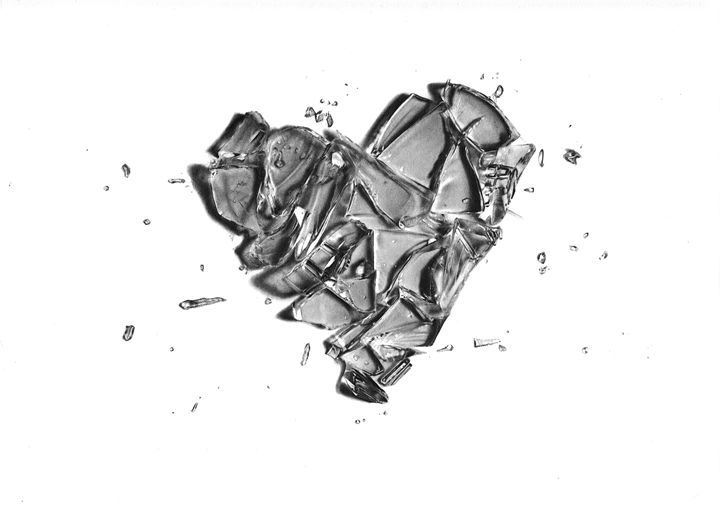The Truth About Healing: It Doesn’t Mean the Pain Disappears
- Cindy-Lee
- Jun 1
- 4 min read

“I’ve done the therapy. I’ve talked about my trauma. I’ve healed.”
It’s something I hear often from clients. And I understand why they say it. After months or even years of therapy, journaling, reading, reflecting, crying, and finally speaking the truth out loud, there’s this moment of quiet relief — a belief that the worst is over. That the healing is done. That you’re finished with that chapter of your life.
But here’s something we don’t talk about enough. Healing doesn’t mean the trauma is gone. It means you’ve learned how to carry it differently. It means you’ve developed the tools to cope. It means you’re no longer trapped in it every single day. But it doesn’t mean that one day it won’t come rushing back in — uninvited and heavy.
Healing is not a finish line. It’s not a one-time event. It’s a lifelong relationship with the part of you that got hurt.
For many people, trauma is something that lingers quietly under the surface. You go weeks or months without thinking about it, and then something happens. Maybe it’s a song you haven’t heard in years. Maybe it’s the scent of a certain cologne. Maybe it’s a voice that sounds just a little too familiar. And suddenly, you’re right back in the moment. The memory isn’t just a thought. It’s a full-body experience. Your heart races. Your palms sweat. You feel dizzy or detached or deeply afraid.
And then the shame follows.
“I thought I was healed.”
“I should be over this by now.”
“What’s wrong with me?”
But here’s the truth. Nothing is wrong with you. This is normal. This is human.
The memory of what happened isn’t going to erase itself. Your body remembers. Your nervous system remembers. And sometimes those memories come alive again in ways that feel just as intense as the day it all happened.
This doesn’t mean your healing was fake. It doesn’t mean your therapy didn’t work. It means you’re still human. And your pain is valid — even now.
What matters most in these moments is not whether you still get triggered. What matters is what you do when the trigger shows up.
Do you recognize it for what it is?
Do you allow yourself the space to feel, rather than judging yourself for feeling?
Do you speak to yourself gently, or do you slip back into self-blame?
Healing is not about being unshakable. It’s about becoming softer with yourself when you are shaken.
Sometimes the healing looks like staying present during a panic attack and reminding yourself that this feeling will pass. Sometimes it looks like cancelling plans because your body is telling you it needs rest. Sometimes it’s giving yourself permission to cry without asking why. Other times, healing looks like laughing again — truly, from your belly — and noticing that for the first time in a long time, the joy feels real.
The world often tells us to get over it. To move on. To let it go. But trauma is not a moment that can be packed away and forgotten. It lives in the body. It echoes through our reactions, our fears, our patterns. And it takes time. Real time. Not weeks. Not months. Sometimes not even years.
It takes as long as it takes. And that’s okay.
There is no gold medal for healing faster. There is no reward for pretending the pain doesn’t affect you anymore. What’s far more powerful is acknowledging your triggers, understanding them, and responding to them with care.
This is why patience is such a crucial part of the healing process.
You might have moments where you feel completely free — and then something drags you back to the past. That doesn’t mean you’re starting over. It means there’s a part of your story that still needs attention. And the fact that you notice it now, instead of being consumed by it, is a sign of growth.
You’re allowed to revisit the hurt without falling apart. That is healing.
You’re allowed to still cry about something that happened years ago. That is healing.
You’re allowed to feel fear, even when your life is safe now. That is healing.
Recovery doesn’t mean forgetting. It means learning how to live alongside the pain, without letting it define you. It means loving yourself even on the days you feel like you’ve taken a step back. It means honoring your progress, no matter how small.
So if you find yourself triggered again, please don’t be angry at yourself. Don’t fall into the trap of thinking it’s your fault for not being “healed enough.” You’ve come a long way. You’re doing the work. And just because pain still shows up doesn’t mean you’ve failed.
It means you’re still healing.
And healing is never a straight line.
It’s a journey — sometimes forward, sometimes sideways, sometimes back to the beginning — but always leading toward deeper understanding and compassion.
Be kind to yourself in this process.
You’ve survived so much already.
Give yourself permission to feel, to rest, to begin again — as many times as you need to.
Because healing is not about getting rid of your scars.
It’s about learning to live beautifully with them.




Kommentarer